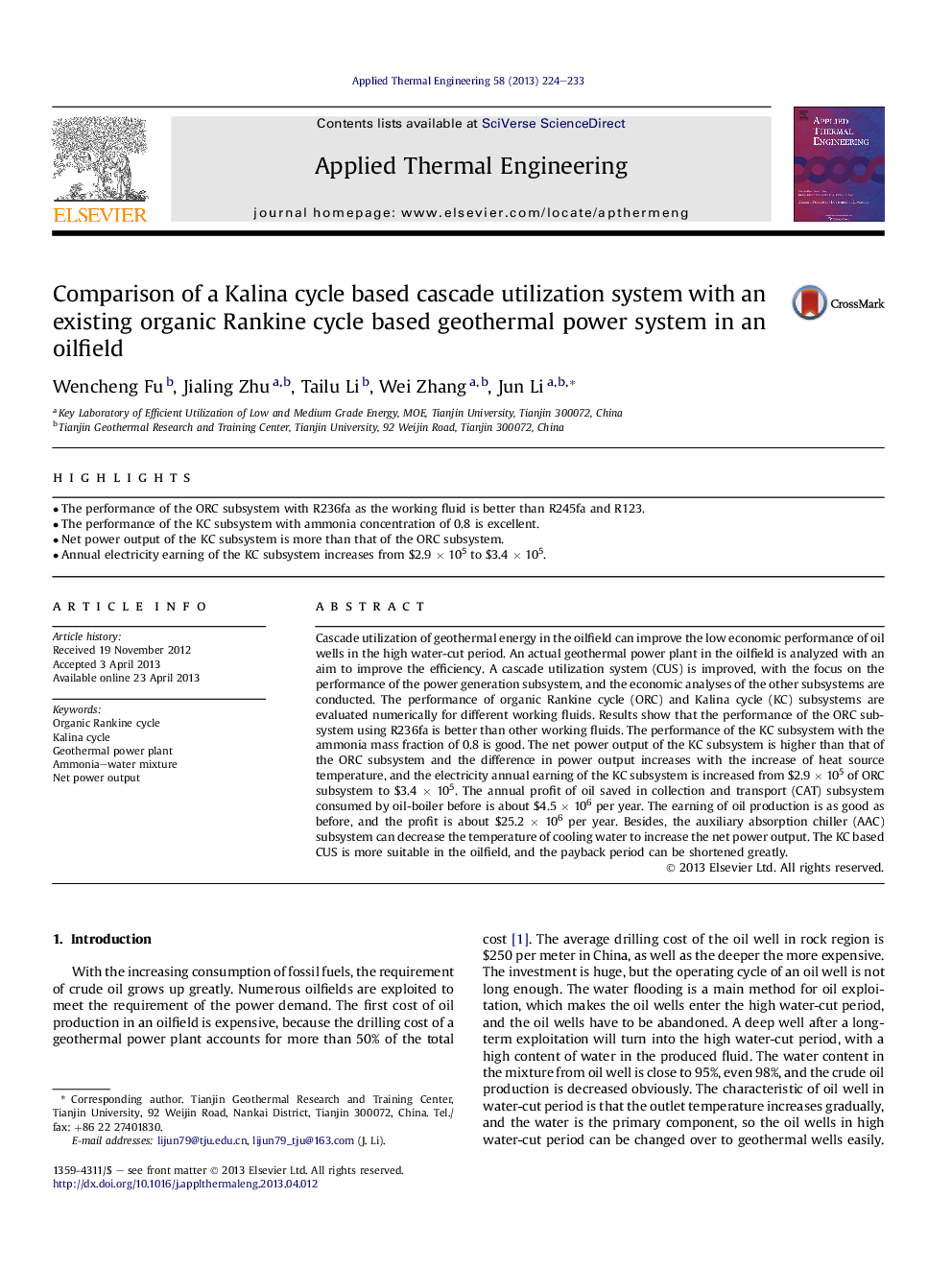| Article ID | Journal | Published Year | Pages | File Type |
|---|---|---|---|---|
| 646801 | Applied Thermal Engineering | 2013 | 10 Pages |
•The performance of the ORC subsystem with R236fa as the working fluid is better than R245fa and R123.•The performance of the KC subsystem with ammonia concentration of 0.8 is excellent.•Net power output of the KC subsystem is more than that of the ORC subsystem.•Annual electricity earning of the KC subsystem increases from $2.9 × 105 to $3.4 × 105.
Cascade utilization of geothermal energy in the oilfield can improve the low economic performance of oil wells in the high water-cut period. An actual geothermal power plant in the oilfield is analyzed with an aim to improve the efficiency. A cascade utilization system (CUS) is improved, with the focus on the performance of the power generation subsystem, and the economic analyses of the other subsystems are conducted. The performance of organic Rankine cycle (ORC) and Kalina cycle (KC) subsystems are evaluated numerically for different working fluids. Results show that the performance of the ORC subsystem using R236fa is better than other working fluids. The performance of the KC subsystem with the ammonia mass fraction of 0.8 is good. The net power output of the KC subsystem is higher than that of the ORC subsystem and the difference in power output increases with the increase of heat source temperature, and the electricity annual earning of the KC subsystem is increased from $2.9 × 105 of ORC subsystem to $3.4 × 105. The annual profit of oil saved in collection and transport (CAT) subsystem consumed by oil-boiler before is about $4.5 × 106 per year. The earning of oil production is as good as before, and the profit is about $25.2 × 106 per year. Besides, the auxiliary absorption chiller (AAC) subsystem can decrease the temperature of cooling water to increase the net power output. The KC based CUS is more suitable in the oilfield, and the payback period can be shortened greatly.
